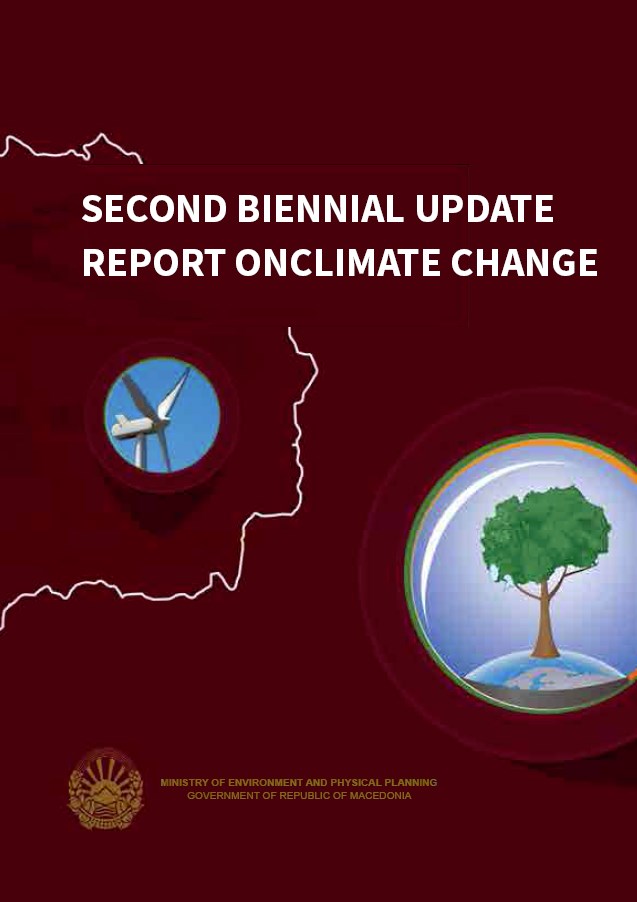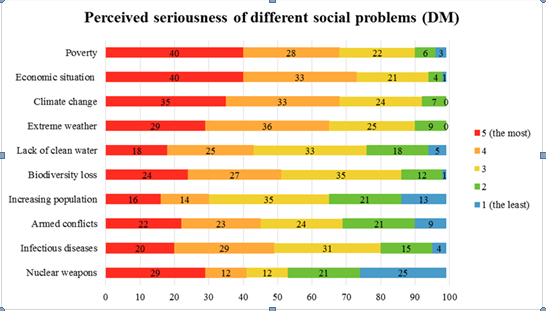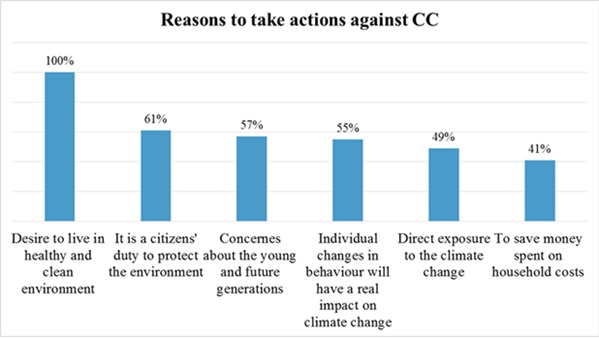The importance Climate Change Communication
ENOUGH WITH THE BLA BLA ACTIVITIES, IT IT'S TIME FOR #ClimateAction- {{"article.by"|translate}} Mrs.Angelina Jovanovik
- {{"article.posted"|translate}} 16-04-2018
The importance Climate Change Communication
ENOUGH WITH THE BLA BLA ACTIVITIES, IT IT'S TIME FOR #ClimateAction
If climate change requires proper addressing and identification of future needs and obligations, as well as prioritization of broad range of stakeholders' activities, it is clear that proper information sharing is absolutely essential. I am deeply convinced that communication should not be only the end objective of a project, but it should be continuous and integral part of the behavior change, it can motivate, reduce obstacles and present joint developed solutions and visions.
Specifically, the process of developing the Second Biennial Update Report on Climate Change (SUBR) is a successful example for good communication throughout the whole process. This Report, as well as the previous reports and planning documents prepared by the United Nations Development Programme and The Ministry of environment and Physical Planning in the area of climate change, are a lot more than reports and numbers which need to be prepared by the state in order to report to the UN Convention on Climate Change (UNFCCC).

Every one of these documents has a life in it, or as we would say, has a soul. Following my personal principle to scratch the surface and look deeper below, revealed the special role of the process itself within the Second Biennial Update Report on Climate Change. Strong motivational component and innovative approach introduced since the beginning to the end of this process, enabled comprehensive involvement of many different stakeholders and social actors: government institutions, local government, NGOs, businesses, media and scientific institutions. The document was developed mostly by national experts, thus strengthening national scientific capacities, connecting different entities, reducing the obstacles caused by various needs and interest and motivating them to develop joint
solutions and visions which as such are strongest.
Therefore, the Climate Change Communication Strategy as part of the Third National Communication on Climate Change as a general communication framework for this area, and then the Progress Report on the Implementation of the Communication Strategy for 2013-2016 and the Communication Action Plan for the following three years are a vanguard and proper tools for better coordination of #Climate Action.

The Communication Action Plan clearly shows that there is a need to build powerful communication networks between various stakeholders and on different levels. Exchange of information, communication concerning ongoing and future projects, as well as combining capacities and expert knowledge enables greater success, originality in the implementation of projects and avoiding unnecessary spending of resources and time for repeating projects.
The starting point when developing the Action Plan 2017-2020 was the progress assessment of the Communication Strategy and the Action Plan for 2013-2016, as well as the comparative results of the two electronic surveys concerning the public perception of climate change in the Republic of Macedonia (2014 and 2016).

Perception of the seriousness of some issues by decision makers
From the Internet-survey: Perception of climate change and level of awareness

Reasons for taking environment protection activities
From the Internet-survey: Perception of climate change and level of awareness

Reasons for not taking environment protection activities and activities for addressing climate change
From the Internet-survey: Perception of climate change and the level of awareness
This made it possible to update the information on public perception of climate change and identified well known topics as well as topics which need to be communicated better. The most recent electronic survey helped identify the key reasons which motivate citizens to develop the desired, climate responsible public behavior. The results also, have pointed out what are the most popular media for obtaining climate change related information, for publishing campaigns and also what institutions working in this area are the most visible ad are seen by Macedonians as most proactive in implementing projects related to climate change. The comparison of the results of this survey with the previous public opinion survey showed how effective were the communication and engagement activities in the two most recent years.
Namely, the climate change awareness in the last two years has improved: in 2014 34% of the respondents could not recognize climate change and did not have sufficient information, in 2016 this percentage is much lower, only 14%. This data clearly shows that the efforts for better information sharing and sharing examples of good practices have given a positive result and this needs to be maintained in future. However, at doing this, we need to be aware that raising public awareness must not be the first important step before communicating and discussing possible solutions to climate change related problems. Hence in the future communication activities special attention needs to be paid to designing climate change campaigns so that the final goal can be achieved with them - which means to establish good communication with the broad public and the targeted groups, because only when the programs and initiatives on climate change are based on the public needs their efficiency is ensured.
The Action Plan contains activities on four levels (targeted in the Communication Strategy on Climate Change) which are as follows: the general communication framework, activities related to cities, to jobs and to households.
In order successfully to translate the Action Plan from ideas to reality, a new web page related to climate change was developed (https://klimatskipromeni.mk/) on which numerous climate change information are presented in an interesting, popular, innovative and easily accessible manner to all stakeholders and to the broad public.
At the end I would like to remind you that ENOUGH WITH THE BLA BLA ACTIVITIES, IT IT'S TIME FOR #ClimateAction.
-
Корисни линкови
26-01-2021 -
Справување со климатските промени и загадувањето на воздухот во градот Скопје
29-04-2018 -
Финансирање во климата
28-01-2022 -
Микронаративи
08-06-2022
{{"article.lastestPosts"|translate}}
-
Нови финансирања за унапредување на природата и биолошката разновидност на Зелената агенда за Западен Балкан
11-03-2025 -
Започна проектот за развој на 1-от и 2-от двогодишен извештај за транспарентност и 5-от национален извештај за климатски промени на С.Македонија
04-03-2025 -
Земјоделски форум за климатски промени: Се изнаоѓаат решенија за поголема климатска отпроност на заемјоделието
02-12-2024 -
Заврши COP29, центарален фокус на финасирањето за климата
02-12-2024




 Мод за знаковен јазик
Мод за знаковен јазик Говорен асистент
Говорен асистент Означи линкови
Означи линкови

 Зголеми маус
Зголеми маус